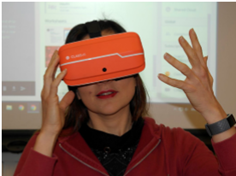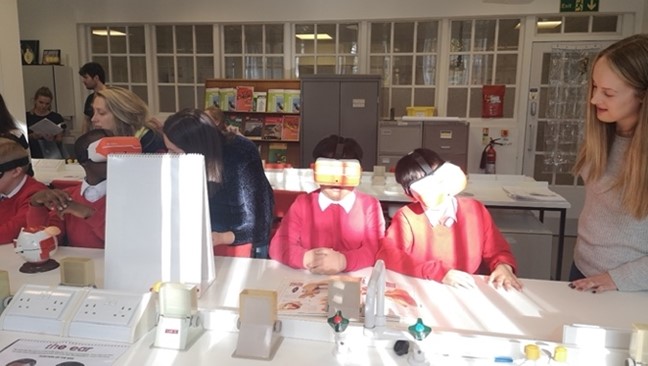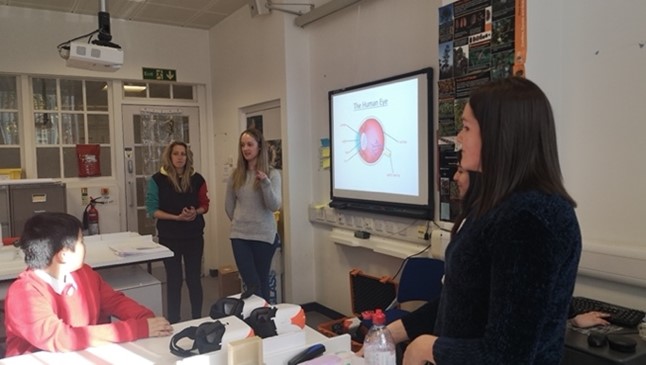Completion of a small grant about Implementing virtual reality supported lessons
Published: 24 March 2021
Dr. Gabriella Rodolico has completed a small grant project that is designed to support trainee teachers to develop confidence in applying immersive VR and AR technology to their own teaching.

Dr. Gabriella Rodolico has completed a small grant project that is designed to support trainee teachers to develop confidence in applying immersive VR and AR technology to their own teaching. In 2019 Dr. Rodolico started exploring to what extent a combination of student experience of VR, in the context of learning about effective pedagogy techniques in Initial Teacher Education (ITE) courses, followed by student planning VR supported lessons, could assist student teachers in overcoming some of the barriers preventing the integration of VR into regular classroom practice. The project was supported by the Small Grant School of Education which allowed her to purchase a set of 8 Virtual Reality ClassVR Goggles with attached the Avantis Portal software. She implemented this system in several Science lessons in PGDE Primary and Secondary (Biology) classes, however its potential could be very relevant for all the other Subjects taught in every course at the School of Education.
The possibility of studying the effect of virtual reality in Education, not only could support the analysis of the impact that this type of technology has on the understanding of difficult concepts in science education, but also on the learning experience that teachers and students share every day in the classroom and the enjoyment that comes from this mutual exchange.
In Autumn 2019, Dr. Rodolico and her Science Education colleagues organised some lessons for the PGDE primary student teachers, with a balanced blending of traditional as well as innovative effective pedagogy techniques.
A pit-stop tour of active learning methods in preparation for an on-campus teaching session was organised for the PGDE primary student teachers who, in a meta-level approach, had the chance to test several teaching tools. Student teachers moved from traditional peak flow meters and body organ aprons, to innovative augumented reality t-shirts showing the internal organs, and virtual reality ClassVR headsets with an immersive virtual tour around the body. The following week, PGDE primary student teachers had to plan a lesson on body systems, in a micro-teaching cooperative style, for the primary six pupils from a local Primary School, who were invited to visit the School of Education. Student teachers had their “Pupils for a day” and organised a series of workshops in several rooms that children explored in a carousel fashion from the most traditional teaching strategies to the more innovative ClassVR VR supported lesson where the different organs and body components available the human anatomy playlist supported their understanding.
The results of the whole session were promising, pupils showed engagement and enjoyment of the lesson being able to richly describe and explain what they learnt. While data suggest that PGDE student teachers were more willing in implementing VR supported lessons after experiencing it first-hand in their ITE science course.


First published: 24 March 2021
This video summarises of impact: https://www.youtube.com/watch?v=AGqFQ-LPw7E&t=10s

